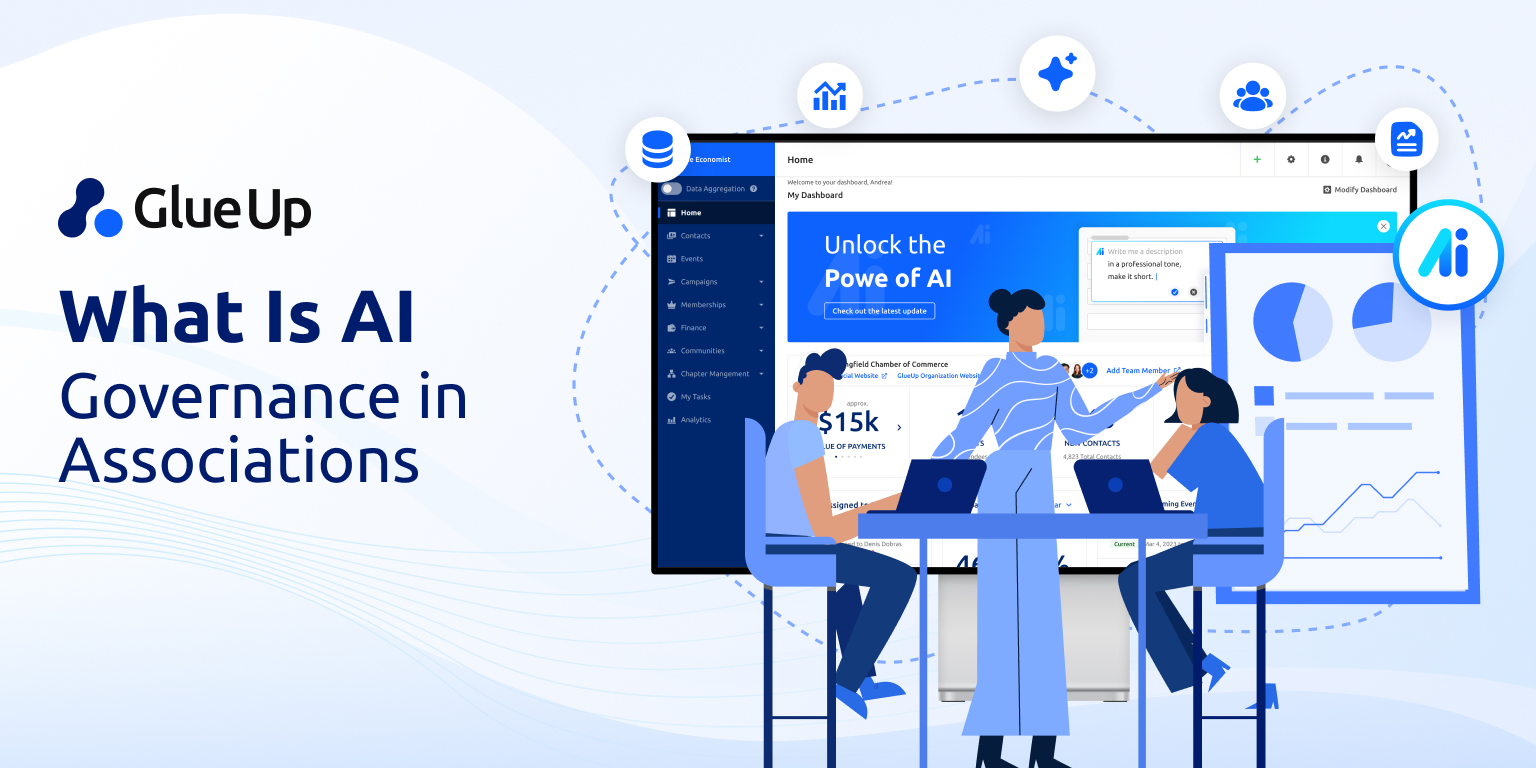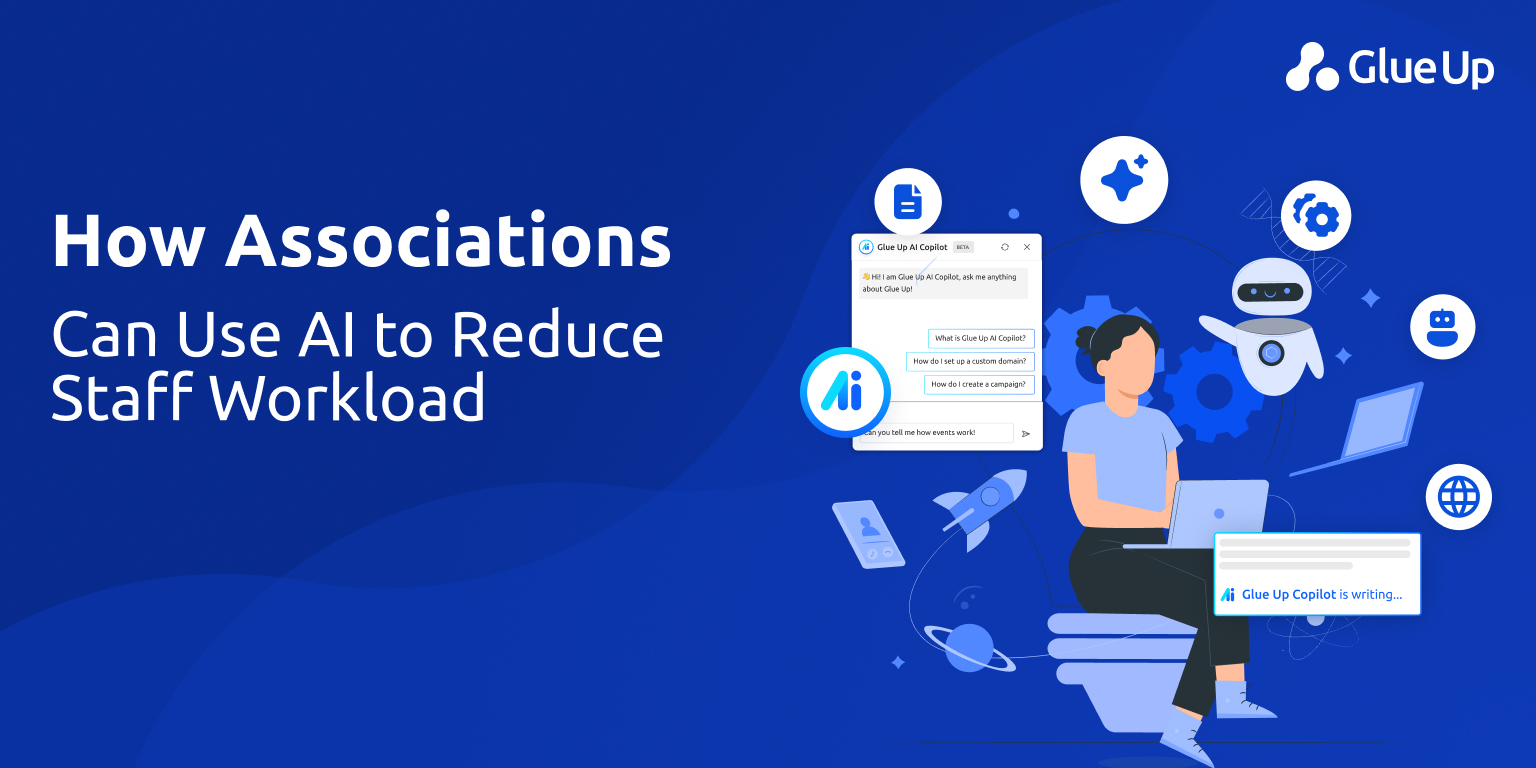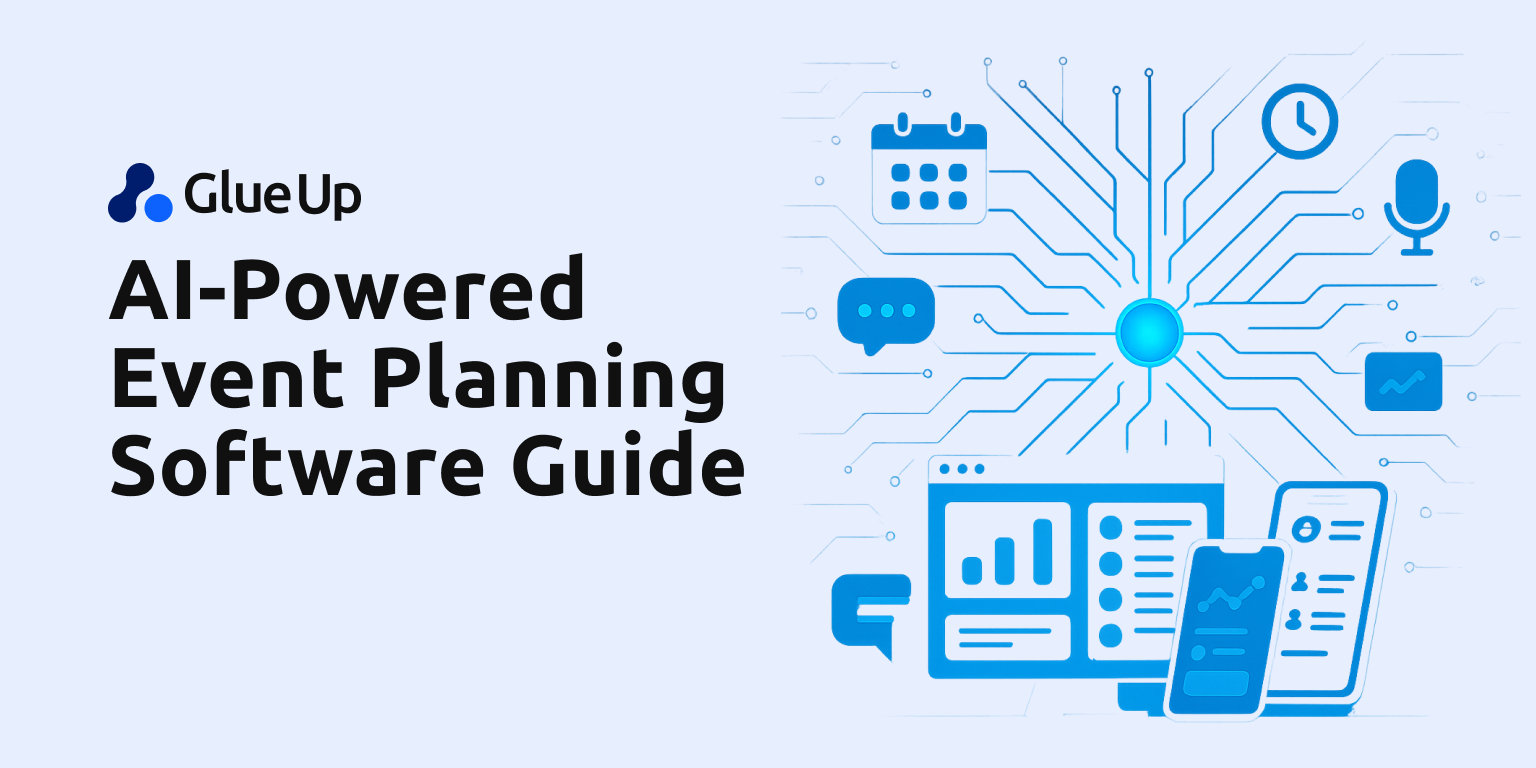
You know the drill. You’re juggling Zoom links, attendee lists, follow-ups, speaker bios, food orders, budgets, venue issues, and somewhere in that mess, you’re still expected to increase engagement and prove ROI. If you’re managing all of this without the help of AI-powered event planning software, you’re working harder than you need to. Way harder.
Most of the tasks filling up your calendar could’ve been automated five years ago. And if your events still run on gut instinct and last-minute emails, it’s time for a smarter way forward. This is about doing what you already do, just better, faster, and without burning out.
Let’s break down what that actually means.
What is AI-Powered Event Planning Software?
Reframing the definition of AI in events
In recent years, the term “AI-powered” has been widely overused, applied liberally to everything from calendar apps to basic email automation. This dilution has blurred the line between rule-based automation and actual artificial intelligence. However, in the context of event management, the true value of AI-powered event planning software lies not in simple task execution but in dynamic learning and continuous optimization.
While traditional event software provides a set of static tools: registration forms, email templates, scheduling modules; AI-enabled platforms transform these elements into responsive systems. These systems absorb behavioral and historical data, learn from it, and then adapt their outputs in real time, continuously improving how events are marketed, structured, and analyzed.
What differentiates AI-powered platforms from conventional tools
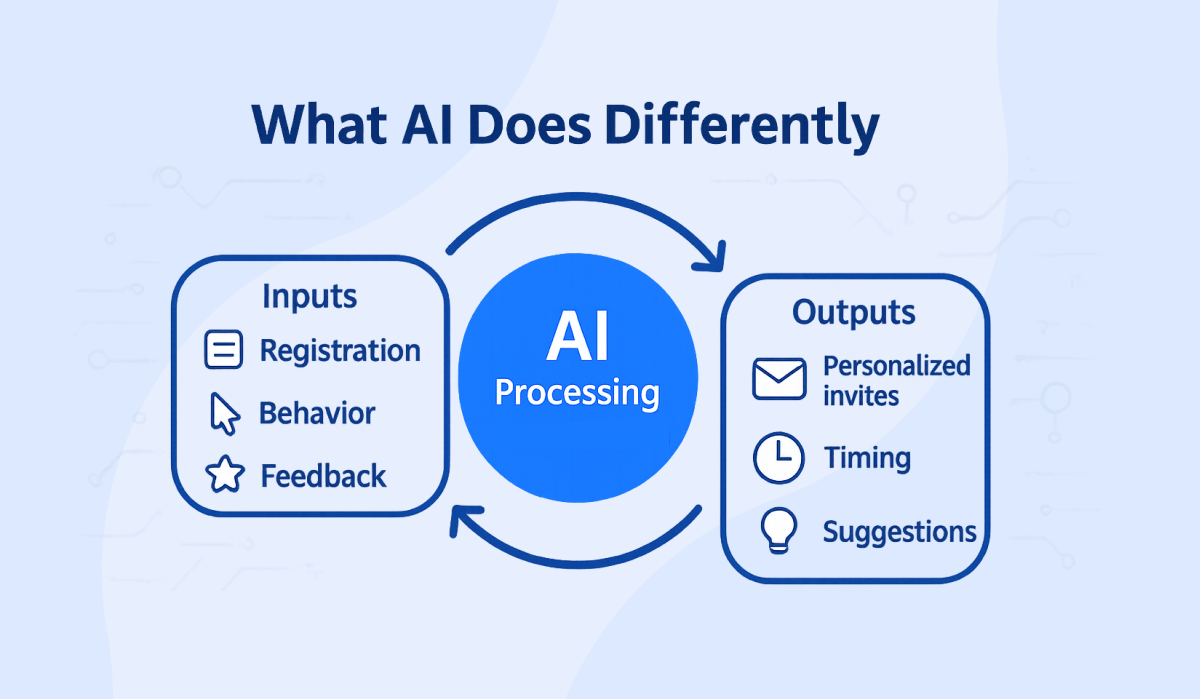
The most immediate difference is that AI-powered event planning software executes tasks and makes decisions.
It can assess multiple data points across previous events: attendance trends, email open rates, registration timing, survey responses; and apply predictive modeling to forecast turnout, likely no-shows, or even peak session interest.
Instead of blasting generic reminders, it can customize outreach based on what format each member is most likely to engage in: email, SMS, push notification; at the times they are statistically most responsive.
It segments audiences not by superficial tags like “VIP” or “board member,” but by observed behaviors. Attendees are grouped by how they engage: early registrants, last-minute joiners, multi-event attendees, passive subscribers, and more.
They’re patterns. And the more events your organization runs through a single system, the more the platform improves.
Orchestration vs. automation: an important distinction
Whereas automation follows pre-built rules (“Send reminder email 3 days before event”), orchestration enables the system to decide when and how to engage based on multiple inputs. In the context of event planning, this means:
Recommending the optimal time to launch marketing based on real past performance.
Adjusting email frequency dynamically if an attendee has already interacted with recent content.
Offering schedule personalization to attendees based on prior interests or sessions they've interacted with.
This is the strategic shift: from static workflows to adaptive journeys. From action plans to co-planning alongside AI.
Lifecycle intelligence
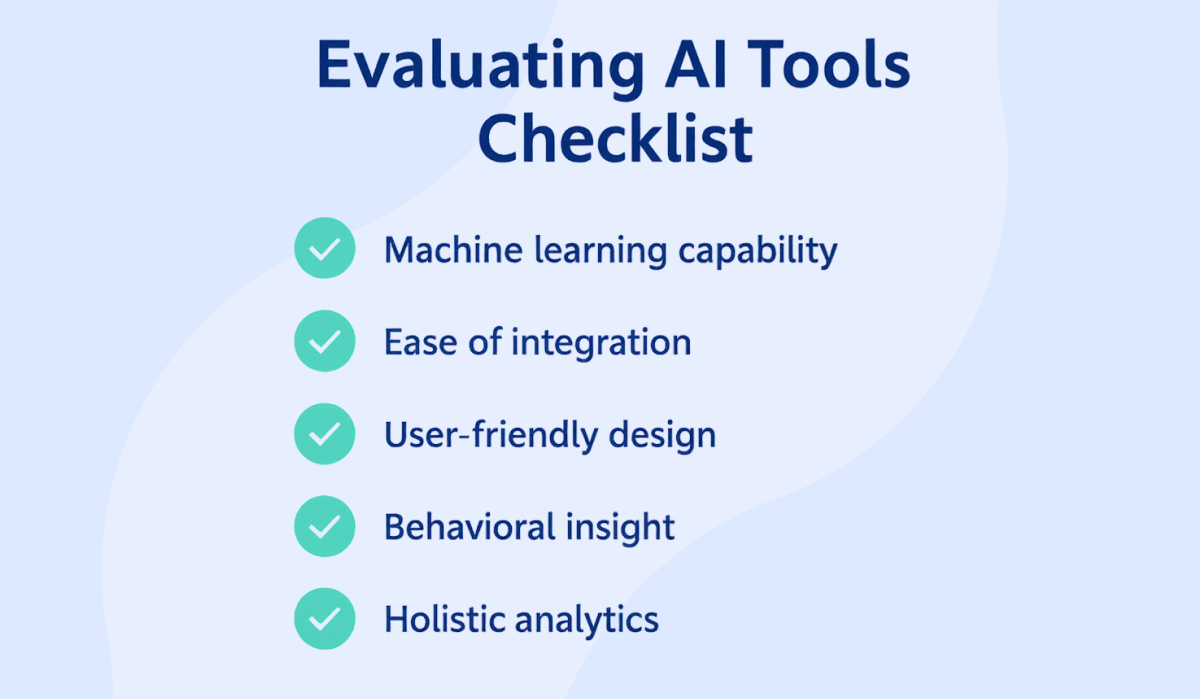
One of the more overlooked benefits of AI-powered event planning software is its full lifecycle approach. Many platforms focus on either pre-event marketing or post-event analytics. AI-powered systems work across all phases:
Pre-event: Audience segmentation, timing optimization, behavioral targeting, and predicted turnout based on historical trends.
During the event: Real-time engagement scoring, live session performance tracking, personalized notifications, and adaptive scheduling.
Post-event: Automated report generation, sentiment analysis from surveys, recommendation engines for future follow-ups, and even speaker performance benchmarks.
This vertical integration of data turns reactive planning into proactive strategy. It also helps eliminate the siloing of data across CRM systems, marketing tools, and event platforms; an issue that, according to IBM, contributes to 82% of enterprises reporting workflow disruption due to data silos.
From insight to action: enabling strategic leadership
The biggest impact of AI-powered event planning software isn’t found in flashy dashboards or smart emails; it’s in what it enables association executives and marketing leads to do with their time and attention. By removing the need to manually parse through registration reports, attendance exports, and open-rate logs, these platforms free up space for higher-order thinking.
When event data turns into decision-ready recommendations, leaders can focus on member strategy. They can make faster decisions about event formats, pricing models, engagement tactics, and future programming; all backed by live intelligence.
And for organizations under pressure to prove value to members and stakeholders, this shift is critical. As McKinsey & Company recently noted, organizations that apply AI-driven insights to operational planning outperform peers by up to 20% in efficiency gains.
An evolving capability
It’s important to emphasize: AI-powered event planning software is not a “one and done” implementation. Like any strategic asset, its effectiveness compounds over time. The more it learns, the better it gets at driving results.
Organizations that fully adopt it plan better events and build institutional knowledge. They become more agile in adjusting to market shifts, more accurate in forecasting, and more intentional in shaping member experiences. The software becomes a capability, a strategic enabler rather than a functional assistant.
The pain points AI-Powered Event Planning Software quietly solves
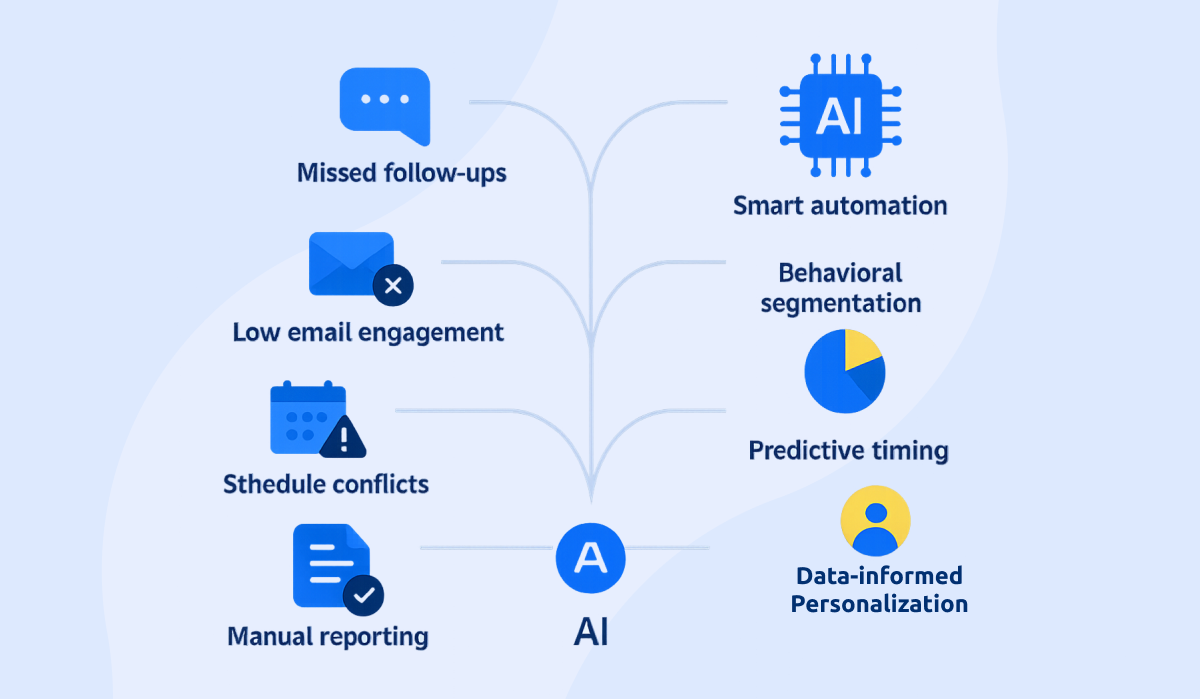
Technology fatigue is real. Every organization has its share of unused tools and abandoned platforms. But the real challenge is the overabundance of disconnected ones. Event planning teams don’t need more software; they need fewer things to fix manually. They need orchestration. And this is where AI-powered event planning software proves its worth by reducing friction across your entire workflow.
In many cases, the most disruptive challenges are the ones that have quietly become part of the routine; pain points we’ve stopped questioning because we’ve learned to work around them. Here’s how AI changes that dynamic, one silent bottleneck at a time.
1. Follow-ups that happen without you lifting a finger
After every event, there’s a tedious moment of inertia: exporting attendee lists, matching survey responses, tagging contacts, and trying to segment your next steps. This task often falls through the cracks, and the result is missed opportunities to reinforce value.
AI-powered event planning software automates this process intelligently. It identifies who attended, who left early, who clicked on post-event surveys, and who ignored every touchpoint. Then it adjusts the communication sequence based on behavior. Active participants get next step offers. Passive viewers get soft re-engagement nudges. Ghosts are left alone saving your reputation and your sender score.
2. Marketing that connects
Generic email marketing is actively damaging. When messages feel mass-produced, members disengage. Worse, they unsubscribe.
AI flips that script. Subject lines are A/B tested and refined in real time. Campaigns are automatically segmented by behavioral data. Attendees receive content based on interest clusters and previous engagement signals. The result: higher open rates, better click-throughs, and messaging that feels intentional.
This isn’t “mail merge at scale.” It’s true personalization, informed by data and executed with nuance.
3. Timing that’s driven by behavior, not intuition
Choosing a time to host your event, or even send your first invite, is often a political decision disguised as a strategic one. Without real data, timing becomes guesswork.
With AI-powered event planning software, timing is calibrated against real engagement history. The system knows when your audience tends to register, which days yield the best attendance, and what lead times result in the highest turnout. It learns from your past performance and recommends scheduling strategies that reflect actual behavioral patterns.
You stop scheduling based on instinct and start planning based on evidence.
4. Agendas that adapt to member interests
Cookie-cutter agendas don’t work anymore. Today’s members expect relevance. They expect a structure that respects their time, interests, and attention spans.
AI supports that by analyzing which session types: panels, workshops, Q&As; drive the most engagement in your specific context. It looks at session drop-off rates, speaker ratings, and audience demographics to recommend smarter configurations. It can even auto-suggest break times and networking slots based on what’s kept past attendees most engaged.
This is convenient and strategic. When the flow of your event aligns with actual behavior, satisfaction rises, and attrition drops.
5. Post-event reporting that leads to action
Reporting often becomes a post-mortem, a way to explain what didn’t work, rather than a guide for what to do next. That’s largely because compiling meaningful reports is time-consuming and interpreting them is even harder.
AI-powered event planning software shifts reporting from a static document to a living dashboard. It offers instant summaries of attendance patterns, engagement scores, popular sessions, and conversion metrics. It highlights anomalies. It recommends the next steps. And most importantly, it translates event data into business outcomes so that leadership can understand revenue influence, membership movement, and retention signals.
You’re no longer scrambling to justify the value of your event. You’re walking into meetings with clear, actionable intelligence.
Where Glue Up fits into the equation
Let’s pause for a second. This isn’t a pitch, but it would be incomplete not to talk about how Glue Up is approaching this space differently.
Most so-called AI-powered event planning software tools bolt AI features onto a single-function product. You get a chatbot here, a recommendation engine there, and maybe an automation plugin that syncs with three other tools; if you’re lucky. The result is fragmented workflows, inconsistent data, and more time spent managing your stack than engaging your members.
Glue Up takes a fundamentally different approach.
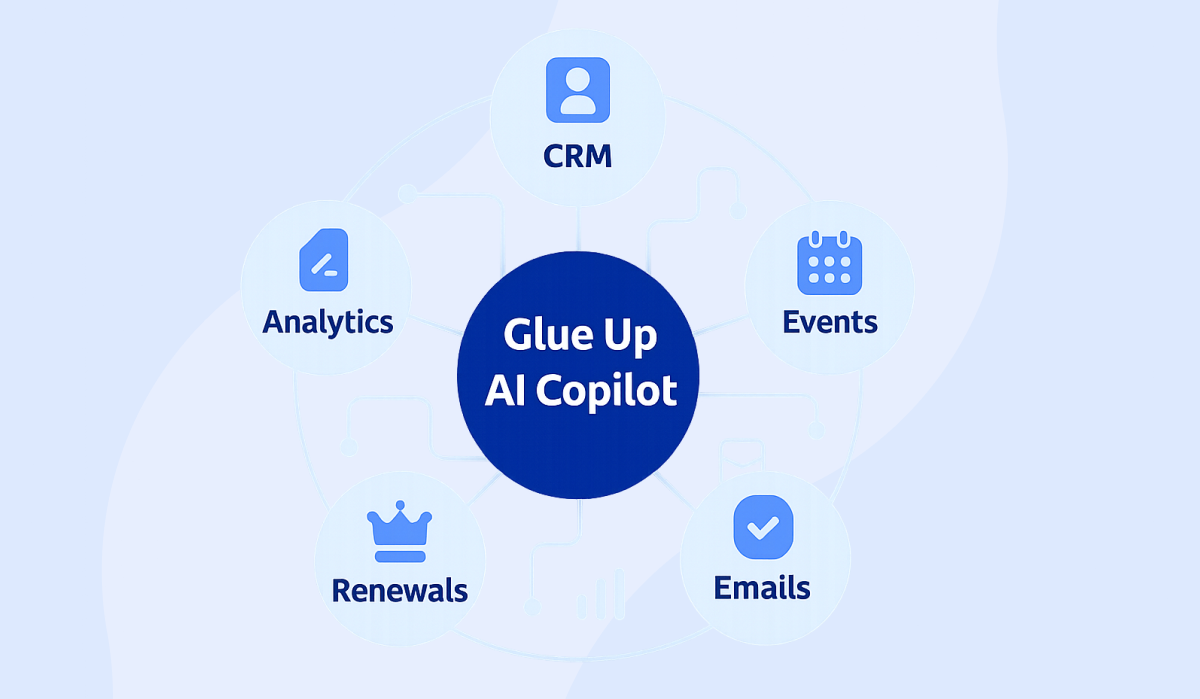
We designed our AI Copilot from the ground up to work within an all-in-one ecosystem tailored for associations, chambers of commerce, and member-based organizations. That means AI is layered on, embedded across your event lifecycle, your CRM, your email campaigns, your membership renewals, and more. Everything is connected, and that’s what makes it powerful.
Here’s what that looks like in practice:
Smart Lists that dynamically prioritize contacts based on real-time engagement scoring, so your outreach is always focused and relevant.
Predictive analytics that anticipate registration trends, attendance likelihood, and even member churn risk.
Auto-generated event descriptions, agendas, and post-event summaries powered by AI Copilot, saving hours of manual copywriting.
Follow-up suggestions that tell you not just who to email, but what to say and when to say it, based on behavior and outcomes.
A CRM that learns: every member action feeds into a continuously learning system that helps you plan smarter.
And all of this happens in one place. No export. No tool-hopping. No data silos.
Glue Up’s AI-powered event planning software doesn’t treat your events as standalone campaigns. It treats them as strategic building blocks in your broader engagement and growth strategy. Whether you’re planning a multi-day conference or a local networking mixer, the platform adapts to your context, and your goals.
So, if your current tools still leave you stitching together spreadsheets, guessing at what content will land, or scrambling to explain ROI, maybe it’s time for something that works with you.
Because when your software understands your members, your events become more than just logistical wins. They become relationship accelerators.
Evaluating AI-Powered Event Planning Software: five questions that matter more than the features
AI is everywhere right now; on pitch decks, in press releases, and pasted onto products that haven’t meaningfully changed in years. But just because a platform markets itself as “AI-powered” doesn’t mean it’s intelligent in any practical sense. If the tool can’t learn, adapt, or improve based on your actual member and event data, it’s not AI. It’s automation dressed in buzzwords.
When evaluating AI-powered event planning software, it’s not about how futuristic the interface looks. It’s about how well the tool understands your context and enhances your team’s capabilities without adding complexity.
Here’s a smarter way to assess whether an AI solution is worth your attention, or just another dashboard you’ll eventually stop logging into.
1. Is AI actually learning, or just following rules?

Many platforms confuse automation with intelligence. A real AI system should evolve with every event. That means:
Recognizing patterns in attendance behavior.
Adjusting recommendations based on event performance.
Improving messaging suggestions based on past engagement metrics.
If the system can’t adapt over time, or worse, requires manual rule updates, it’s not delivering the value AI promises.
2. Does it integrate with your core systems?
AI can’t function in isolation. If it doesn’t talk to your CRM, membership platform, email engine, or event modules, it won’t have the data it needs to make accurate predictions or personalized recommendations.
AI-powered event planning software should operate within, or be deeply connected to, the tools you’re already using. Otherwise, your team will spend more time managing integrations than improving events.
3. Can it personalize beyond just first names?
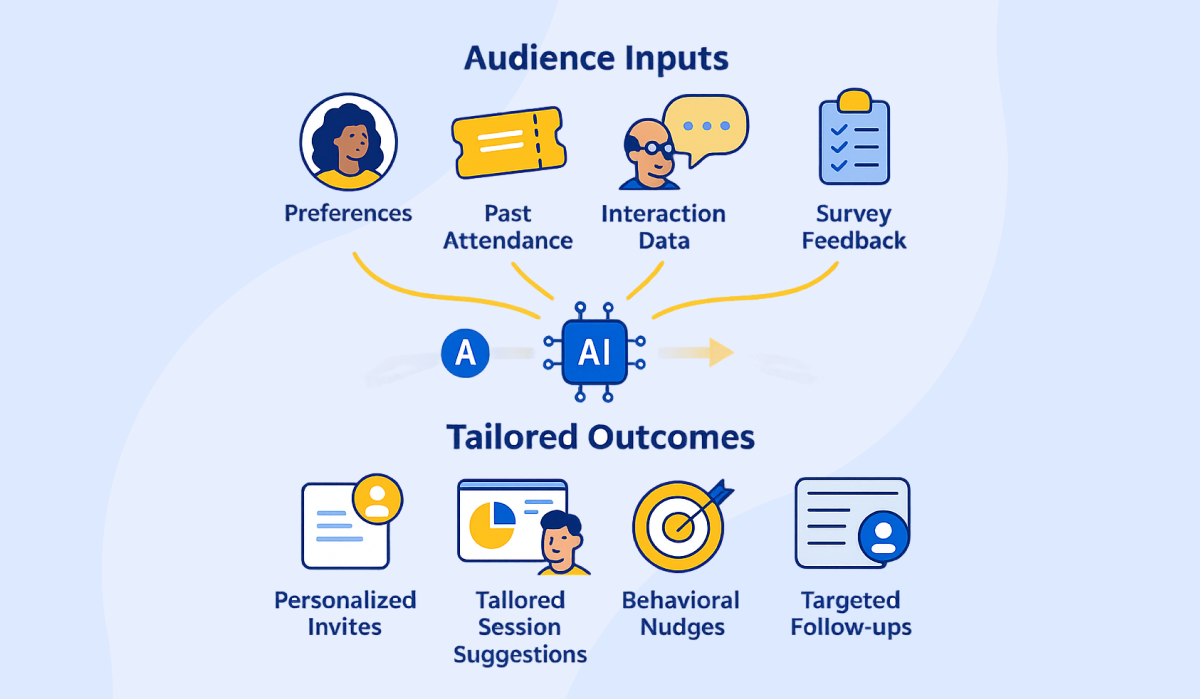
True personalization happens at the behavioral level. The platform should be able to segment audiences based on engagement history, content preferences, attendance patterns, and survey interactions.
If the extent of personalization is dropping someone’s name into a subject line, the system isn’t serving your members, or your strategy.
4. Is engagement measured holistically?
Registrations and attendance are important, but they only tell part of the story. A sophisticated AI platform should also analyze:
Chat participation during sessions.
Poll response rates.
Click behavior on post-event follow-ups.
Interaction with shared resources or downloads.
The more inputs the software can analyze, the more accurately it can recommend next steps and surface hidden opportunities.
5. Is the output usable by real humans?
AI is only as good as its usability. If your team needs a data analyst to make sense of the recommendations, the system creates friction instead of removing it.
Look for platforms that deliver insights in plain language, generate content suggestions automatically, and surface patterns without requiring deep technical expertise.
AI and the future of member engagement
Let’s zoom out. This conversation is recalibrating what your members expect from you, and what your organization can deliver in return.
In nearly every part of their lives, your members are surrounded by intelligent systems. Netflix knows what they want to watch before they do. Spotify curates' weekly playlists based on what they didn’t skip. Amazon predicts reorder needs without asking. These are subtle, AI-driven experiences, and they’re resetting the baseline for engagement everywhere; including in the professional sphere.
So, when members receive generic invites, irrelevant session recommendations, or templated follow-ups, it doesn’t just feel inefficient, it feels outdated. The dissonance between what people experience elsewhere and what they experience in your organization is harmful to long-term engagement.
Organizations that adopt AI-powered event planning software are narrowing that experience gap. They’re building the kind of intelligent infrastructure that allows for responsive, relevant, and recurring member value.
Turning events into data-driven engagement engines
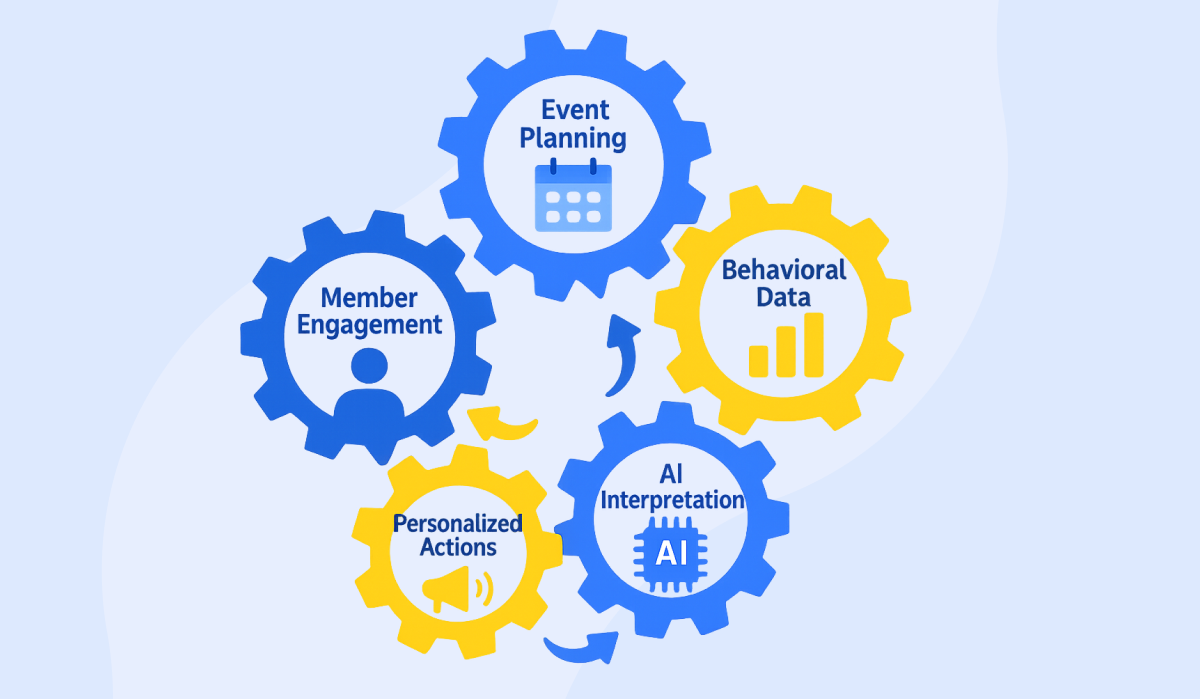
When you layer artificial intelligence across your event lifecycle, something fundamental changes: events stop being isolated campaigns. They become nodes in a feedback system.
Each registration tells you something. Each click, each skipped session, each open email, each survey response, they’re all signals. Individually, they don’t mean much. But with the right AI engine behind them, they become patterns. And those patterns become insight.
This is how AI-powered event planning software repositions your events: not as outputs of your marketing calendar, but as strategic inputs to your engagement model. Every interaction refines your understanding of what each member wants, on a scale.
Engagement is about relevance
It’s easy to assume that more touchpoints equal more engagement. But the reality is more nuanced. Engagement is not about frequency. It’s about fitness. A member who interacts with a few highly relevant events is far more valuable than one who registers for everything but participates in nothing.
AI helps you understand that difference. It helps you shift from pushing events to aligning them. And when your programming begins to reflect the actual preferences and behaviors of your base, engagement becomes a natural byproduct.
The feedback loop that fuels smarter strategy
The best part? This loop is self-reinforcing. As AI-powered event planning software learns from each event, it improves execution and sharpens your strategic lens. You start to see trends in how different segments engage, how seasonality affects turnout, how messaging impacts conversions. And this benefits your next event, influences everything from member recruitment to retention to sponsorship strategy.
This is what smarter organizations are starting to build: better events, better decision-making, more informed leadership.
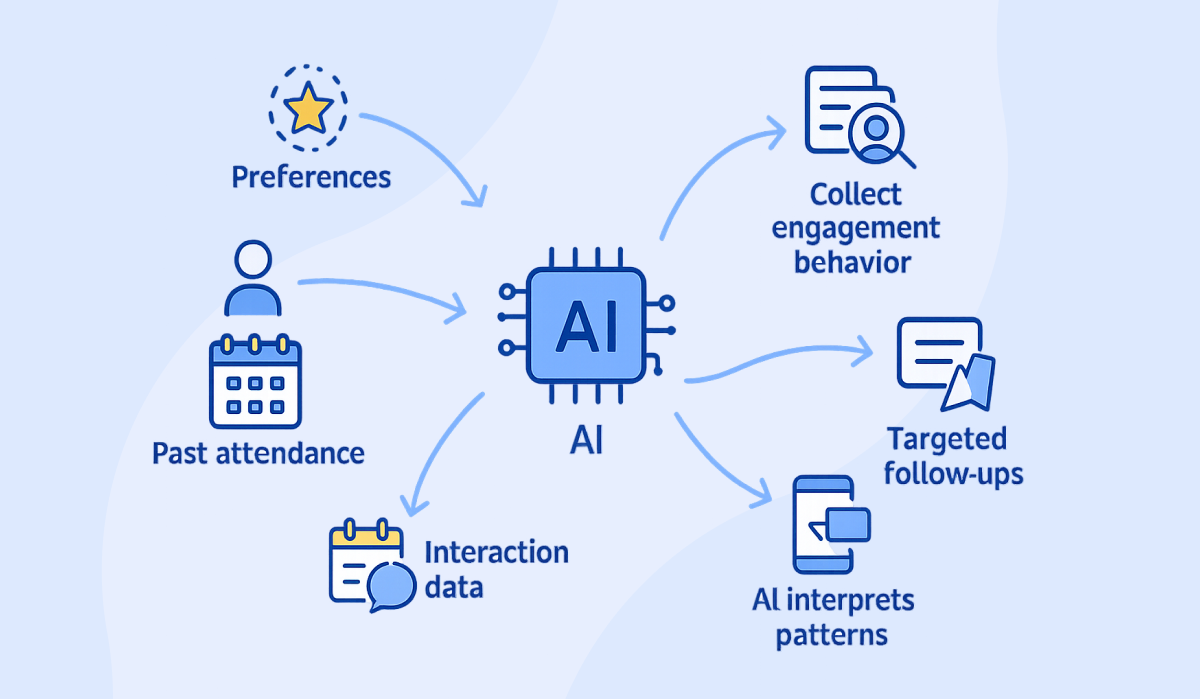
From member touchpoints to member trust
At the heart of all this is trust. When you consistently show up with experiences that feel relevant, respectful of time, and tailored to actual needs, your members notice. They start to believe that your organization gets it, that you’re delivering value and listening.
That kind of engagement drive event metrics. It drives renewals. It attracts referrals. It justifies dues increases. And it strengthens the kind of loyalty that can’t be replicated with email blasts or gift cards.
You just need to start
You don’t need a background in data science to benefit from artificial intelligence. You don’t need to understand the inner workings of machine learning models or predictive algorithms. What you need is the right system, one that’s already doing the heavy lifting in the background, so you can focus on the bigger picture.
AI-powered event planning software removes the barriers that prevent you from using it fully. It doesn’t eliminate strategy; it gives you space to do it better.
Whether you’re planning a high-profile annual conference, a member-led virtual roundtable, or something as intimate as a networking breakfast, the goals are the same: reach the right people, create meaningful experiences, and make your efforts worth the time and investment.
And with the right AI system in place, you can:
Target audiences based on real engagement, not assumptions
Personalize communication without doubling your workload
Use data to plan more confidently
Reduce the complexity of post-event follow-ups and reporting
Spend less time fighting spreadsheets, and more time focusing on strategy
This is already happening across organizations that have embraced intelligent systems built for member-based work. The hardest part is recognizing that the status quo is costing you more than you realize.
You don’t need to become a tech expert. You just need to get started with tools that understand the way you work and make it easier.
You’ve already done the hard part, now let AI do its part
You’ve navigated event planning through uncertainty, budget constraints, shifting leadership priorities, and impossible timelines. You’ve built programs from scratch, adapted on the fly, and delivered value under pressure; again, and again. That kind of experience can’t be replaced. And the good news is, it doesn’t need to be.
AI-powered event planning software isn’t here to rewrite what you know. It’s here to extend it. To take the administrative strain off your plate, connect the dots across your systems, and help you focus on the parts of your work that actually move the needle.
So, the real question isn’t whether AI is worth it. It’s whether doing things the old way is still serving you.
Would you still handwrite invoices? Would you manually post to every social media account, one by one? Probably not, because when smarter tools exist, you evolve.
This is that evolution.
If you’re curious how AI fits into your events, your workflows, and your member engagement strategy, we’ll show you. Book a personalized demo with Glue Up today and see how the right intelligence can turn your next event from another deadline into a real differentiator.


